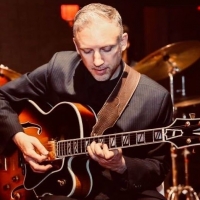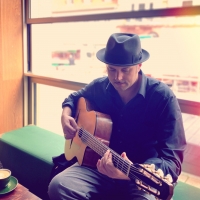DjangoBooks.com
Welcome to our Community!
Categories
- 20K All Categories
- 1.1K General
- 477 Welcome
- 59 Archtop Eddy's Corner
- 146 CD, DVD, and Concert Reviews
- 385 FAQ
- 26 Gypsy Jazz Italia
- 27 Photos
- 202 Gypsy Picking
- 21 Unaccompanied Django
- 15 Pearl Django Play-Along Vol.1
- 17 Gypsy Fire
- 45 Gypsy Rhythm
- 1.4K Gypsy Jazz University - Get Educated
- 131 Gypsy Jazz 101
- 227 Repertoire
- 219 History
- 708 Technique
- 51 Licks and Patterns
- 6 Daniel Givone Manouche Guitare Method Users Group
- 20 Eddie Lang Club
- 1.3K Gypsy Jazz Gear
- 802 Guitars, Strings, Picks, Amps, Pickups and Other Accessories
- 460 Classifieds
- 49 Recording
- 62 Other Instruments
- 18 Violin
- 5 Mandolin
- 22 Accordion
- 7 Bass
- 10 Woodwinds
- 348 Gypsy Jazz Events
- 143 North America
- 110 Europe
- 95 International






















Comments
@ChristopheCarington I'm actually a big proponent of practicing at tempo. At first I take it slow, 50% of my target, until I learn the thing then I go right to tempo. Start small and build up. I've heard Danny G say that. Also Shawn Lane said something similar. They're one of the reasons I decided to practice that way. If I need to go back to slow, I make sure I'm not changing the picking that I use when playing it fast. Which, my video here isn't a good representation of that and that wasn't my intention with it. I was using a different time feel to hear what that sounds like. One of the ways I'll try to clean this up is to just take these 3-4 notes around the problem and practice that small chunk at tempo.
I think I see your point here behind this. I'm trying to learn piano, but my local would-be-teacher has a fully booked schedule. So, with a little guidance, I'm learning on my own. Some of the fingerings can be intuitive, but at other times I've found a passage to be difficult. When I've asked, I've been told that some can be personal preference. So, I've tried out some to see if they work for me, then maybe tried to find something else that might be more efficient. Sometimes that might be using weaker finger combos (a la the pinky), but if I can train it to work, it will be more efficient.
Might this be similar to trying to play a difficult passage that might be filled with double-downs that one instead shifts note positions from one string to another on the neck to get more even playing and natural picking? In that case, I can see how trying it "wrong" might lead yout to decide you wanted something better for yourself. Again, it would be a personal decision that made you more comfortable with a certain fingering.
Also, fwiw, regarding the whole "do it 10 times perfectly" sort of thing, I've always just taken my ability on a certain day as just that. The ability on that day. If I could only get it right 2 out of 10 times, I'd practice other things. Tomorrow, I'd try again and maybe get 4/10 but then move one. Instead of just working on that one singular thing, to the detriment of everything else, I trust in the process that it will come when it is ready through regular repeated attempts. Since none of us are perfect, if I got 9/10, I'd probably rejoice that I'd learned it. 90% is an A-grade!
As if Noa heard me and sent another email this morning which had a link to the previous one
Last night after I posted and went back to play I realized that when I play this arp, I actually mute the B string with my index finger when I play that note with the pinky. I'll see if I can practice this way at a faster tempo.
Another frequent pinky user was Eddie Lang.
And due to the heavy string gauges he used, he must have had a superstrong pinky…
Will
Edgar Degas: "Only when he no longer knows what he is doing does the painter do good things.... To draw, you must close your eyes and sing."
Georges Braque: "In art there is only one thing that counts: the bit that can’t be explained."
I'm 9 months into rest stroke picking and I've been experimenting with altering runs and arpeggios to make two notes per string. Maybe this is missing the point of your post, but is it worthwhile to play the descending sequence like this?
This would be all come out of A harmonic minor (except the Eb in the final enclosure) which seems appropriate since you already have an E7b9 arp. WDYT?
13 12
15 12
14 13
15 12
14 11
13 11 12
That's a cool bit of trivia, Will, thanks.
@Dave_P that reminded of years ago when I just joined the forum and was getting into playing this genre, someone asked about playing the similar arpeggio that Angelo plays in a part of his solo on his version of Topsy. He's playing triplets at about 208bpm, I think, I'll double check tomorrow so the person was asking how is Angelo playing this. I figured that you can finger the run so you can do two notes per string. Didn't quite work out to play it. I'm actually using parts of it in my playing though so it wasn't all lost.
That said, what you wrote out is good. You'll hear two notes per string patterns often and I like your idea.
However, to get back to my original issue, I tried it out today and funny thing, it worked a lot better. I didn't even practice much these days, very little. So it's very interesting to me that my issue sort of straightened itself out. I think the action on my guitar was a touch higher the day I recorded. Or I just had an off day. Or a positive error zone that I eventually righted happened the way Noa was talking about in his newsletter.